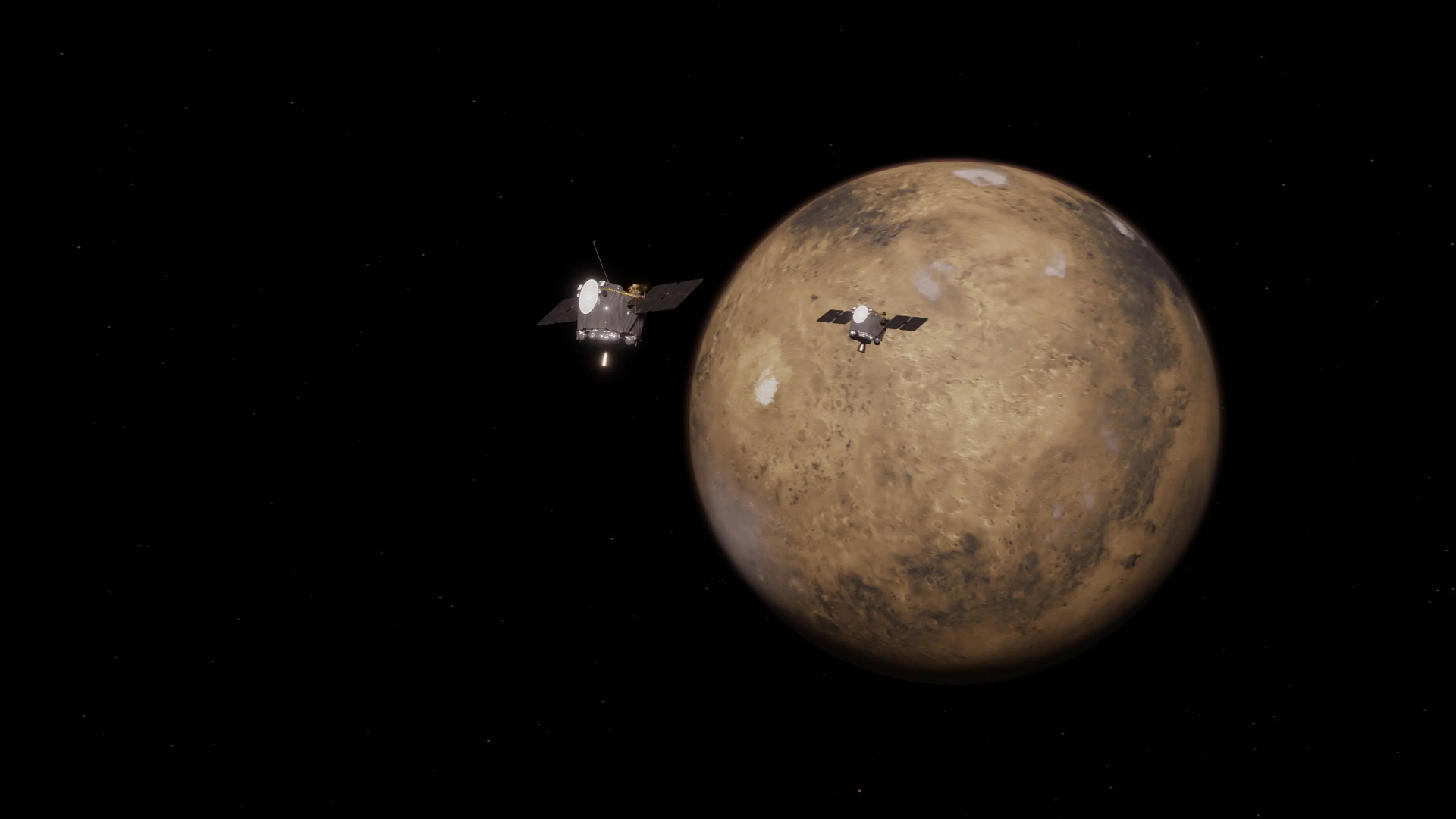Shuttle's Next External Tank Near-fit to Fly
Following more than 18-months of redesign work, the next external tank that will fuel a NASA space shuttle as it is launched into orbit is about ready for delivery, NASA officials said today.
Engineers are currently putting the modified version of NASA's external shuttle fuel tank, dubbed External Tank (ET) 120, through final shakedown tests at the agency's Michoud Assembly Facility near New Orleans before shipping it by barge to Kennedy Space Center (KSC) in Florida on Dec. 31 for shuttle integration, NASA officials told reporters during a telephone briefing.
"The bottom line is that this tank will be the safest, most dependable tank NASA has ever produced," said Sandy Coleman, external tank project manager at NASA's Marshall Space Flight Center, during the briefing. "We've spent the last year and a half developing, testing and implementing safety enhancements for the shuttle's tank and we are very close."
The improved tank is expected to fly with the space shuttle Discovery as part of STS-114 between May and June of 2005. That launch is slated to be NASA's first return-to-flight mission since the loss of the Columbia orbiter and its crew on Feb. 1, 2003.
Weighing about 66,000 pounds (29,937 kilograms) empty, the external tank contains the liquid oxygen and liquid hydrogen propellant used by the shuttle's main engines during launch.
ET 120 is designed to prevent the type of foam loss during launch that doomed the space shuttle Columbia and its seven-astronaut crew. Columbia broke apart over Texas during reentry after hot gases penetrated its left wing through a hole caused by a chunk of insulating foam during the shuttle's launch. That foam, investigators concluded, broke off of Columbia's external tank bipod fitting, a piece of hardware that connects the shuttle to its tank.
The fitting has since been redesigned to use four rod-shaped heaters instead of insulating foam to prevent ice build-up. Tank engineers have also revised their foam application in areas known from past launched to shed ice and insulating material. Finally, ET 120 has been refitted with a camera system to monitor its performance during launch.
Breaking space news, the latest updates on rocket launches, skywatching events and more!
"The design and processing here will minimize the size of debris falling off the vehicle," said Ron Wetmore, Lockheed Martin Space Systems vice president of the external tank project for at the Michoud facility, during the briefing. "We've identified the areas that we've experienced debris from before, and we've made changes, modified or replaced them."
While Lockheed and NASA officials have worked to limit the amount of foam lost during a shuttle launch, they do expect some shedding to occur during the ascent, but anticipate the largest particles will weigh less than one-tenth of a pound, Wetmore added.
Wetmore said there are currently three other tanks in the production flow at Michoud, with the next vehicle to be ready about 60 days after ET 120. That next vehicle, ET 121, could be used as a replacement should any issue come up during the final preparations of ET 120, he added.
It should take about five days for Discovery's external tank to reach KSC after its barge leaves the Michoud facility. Once it arrives, engineers will conduct final system checks and put the final touches on the tank's foam insulation after ET 120 has been mated to the shuttle rocket boosters and orbiter.
"We take victory here in shipping the tank," Coleman said. "We look forward to the next major milestone, which is launch."
Fixing NASA: Continuing Coverage of the Space Shuttle Return to Flight

Tariq is the award-winning Editor-in-Chief of Space.com and joined the team in 2001. He covers human spaceflight, as well as skywatching and entertainment. He became Space.com's Editor-in-Chief in 2019. Before joining Space.com, Tariq was a staff reporter for The Los Angeles Times covering education and city beats in La Habra, Fullerton and Huntington Beach. He's a recipient of the 2022 Harry Kolcum Award for excellence in space reporting and the 2025 Space Pioneer Award from the National Space Society. He is an Eagle Scout and Space Camp alum with journalism degrees from the USC and NYU. You can find Tariq at Space.com and as the co-host to the This Week In Space podcast on the TWiT network. To see his latest project, you can follow Tariq on Twitter @tariqjmalik.
